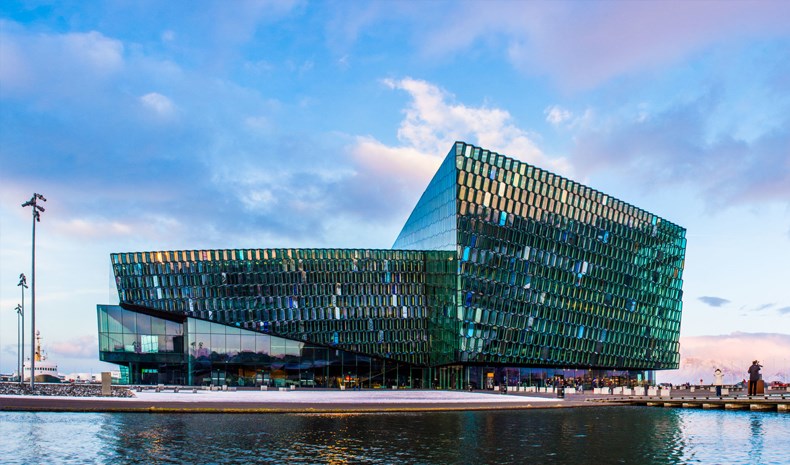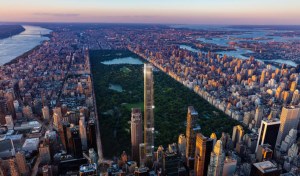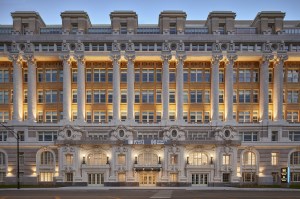The materials and colors of a city's architecture can say a lot about its climate. In Nordic cities, where the winters are long and dark, many organic elements are used in practice and for inspiration, and buildings are often constructed using bright colors.
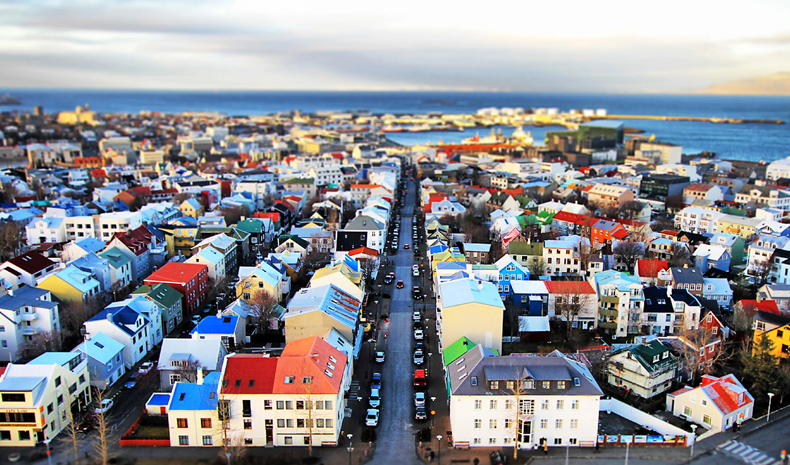
Image source: Architectural Digest
The natural surroundings are frequently considered and used as inspiration as well. For example, many buildings in arctic cities are made with a lot of glass to bring in natural light and to take advantage of the phenomenal views. Additionally, color and colorful buildings can help to lift spirits and create a sense of vibrancy. Similarly, natural elements found in urban settings are scientifically proven to have a calming effect.
Icelandic architecture is particularly well-known for its nature-inspired designs and bold use of color, with many buildings featuring brightly painted facades.
Bringing in Nature
Reykjavík, Iceland, is often considered one of the happiest cities in the world. Reykjavík’s cityscape is characterized by a smattering of color and strong incorporation of natural materials. Surrounded by buildings of reds, yellows, blues, and greens, sits the Hallgrímskirkja (or church on the hill).
Architect Guðjón Samúelsson designed the building with its dramatic white granite façade representing the basalt columns found all over the country. The church interior is clean and brightly lit, with a few stained glass windows bringing in color. The church is one of the nation's most well-known landmarks, and its tower is visible throughout the city.
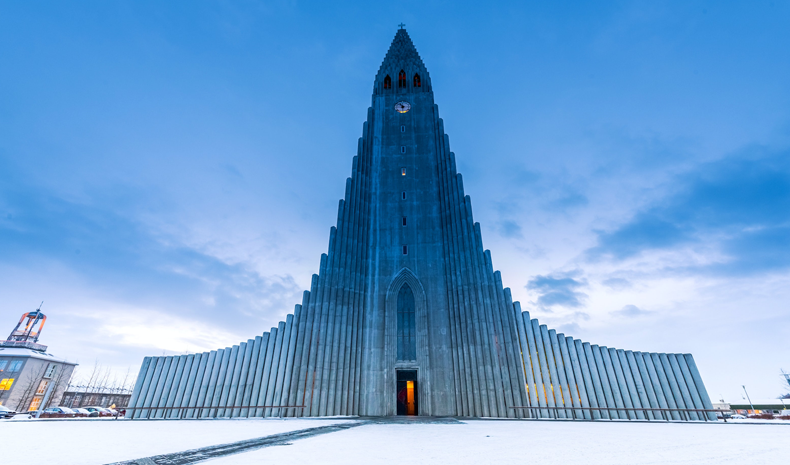
Image source: Itinari | Hallgrímskirkja
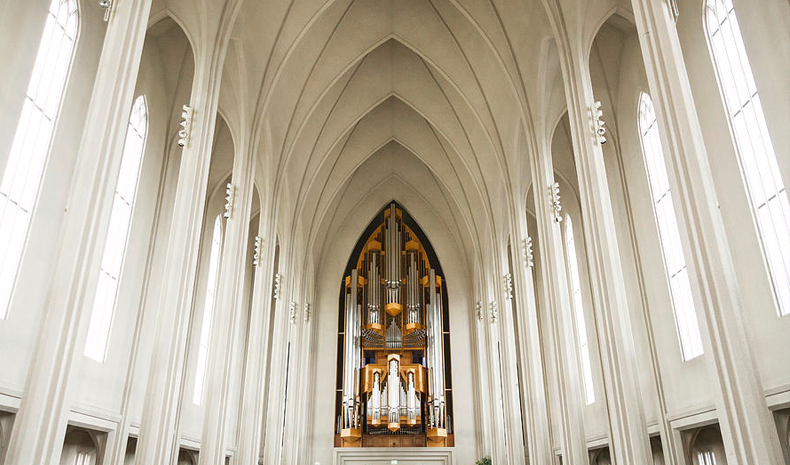
Image source: Fine Art America | Hallgrímskirkja Interior
Also found in Reykjavík is the Supreme Court of Iceland. Designed by Studio Granda, this building is constructed of native basalt stone. Studio Granda plays with light and color in this creation with plenty of tall windows and large outer sections sporting vibrant green copper.
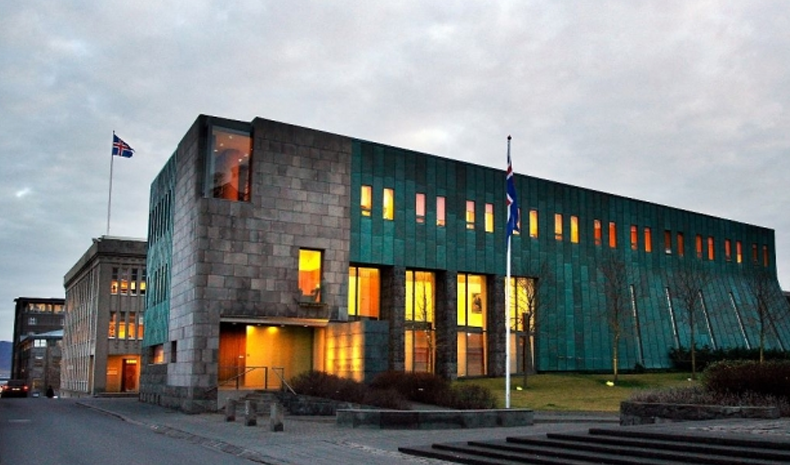
Image source: Iceland Magazine | Supreme Court of Iceland
No architectural tour of Reykjavík would be complete without mentioning the Harpa concert hall. Home to the Icelandic symphony orchestra and Icelandic Opera, this building reads almost more like a sculpture with a beautifully reflective surface that highlights the changing colors of the sky, the nearby harbor, and the vibrant city itself.
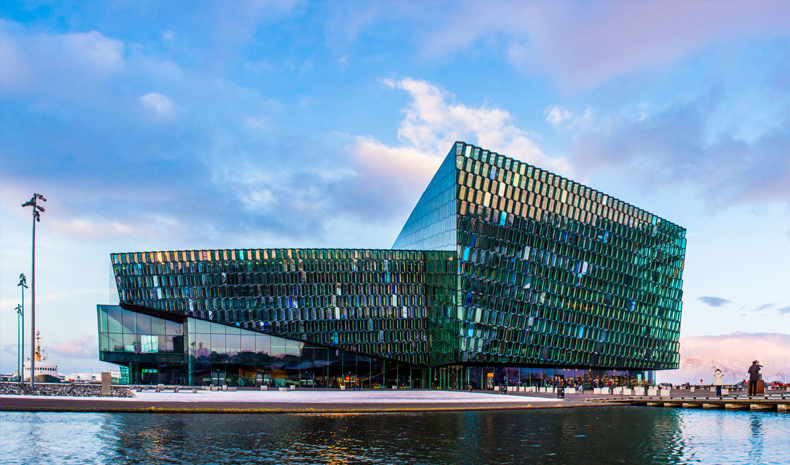
Image source: No Destinations | Herpa Concert Hall
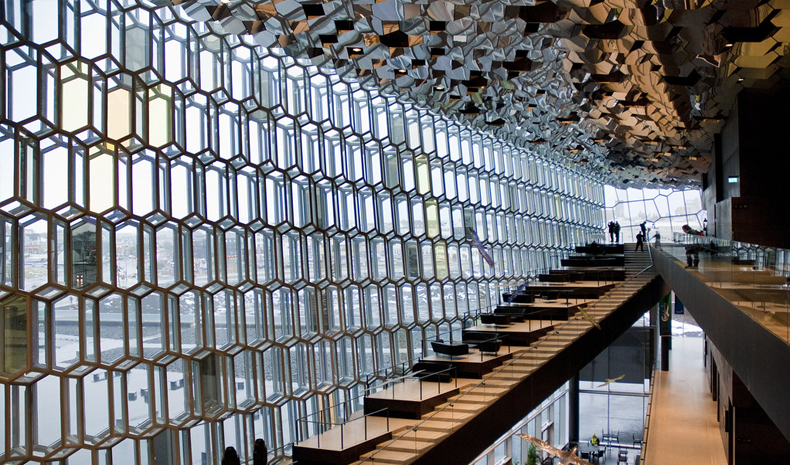 Image source: Flickr | Herpa Concert Hall Interior
Image source: Flickr | Herpa Concert Hall Interior
The striking facade was a collaboration between Henning Larsen Architects, artist Olafur Eliasson, and engineering companies Rambøll and ArtEngineering GmbH.
Across the Norwegian Sea
In Oslo, Norway, natural elements continue to bring inspiration. The Norwegian National Opera & Ballet, designed by the Snøhetta architects, brings in many design elements reminiscent of ice, waves, and the aurora borealis or the northern lights.
The windows reflect the changing light conditions to almost act as an extension of the sky. Natural colors and organic shapes continue inside the building to create a calming and relaxing environment for visitors. This building is also intentionally extremely people-centric, with an accessible roof and open public lobbies.
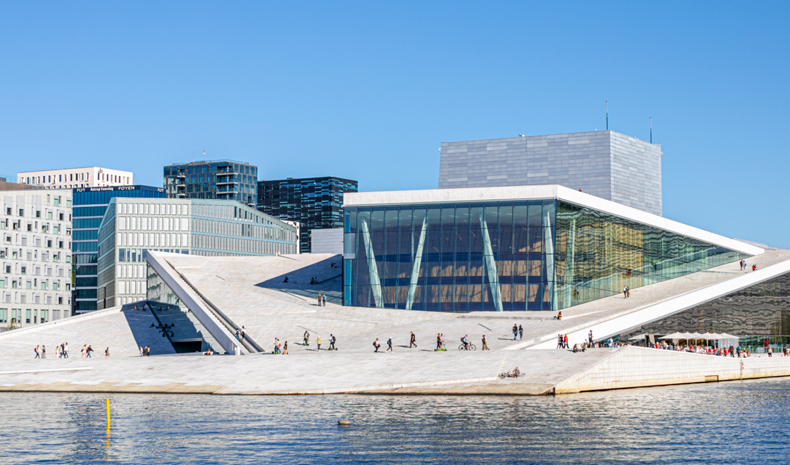
Image source: Visit Norway | Norwegian National Opera & Ballet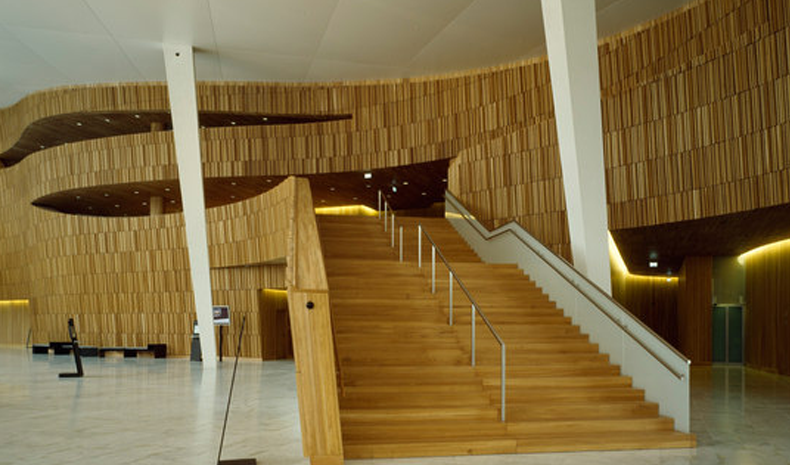
Image source: Architonic | Norwegian National Opera & Ballet Interior
Over 75% of Norway is covered in forests, so it is no surprise that wood is historically significant in their architecture and continues to play an important role today. Visitors can still tour elaborately carved Norwegian Stave churches throughout the country, some with original construction dates going back as far as 1130! Timber continues to appear throughout modern works in the country.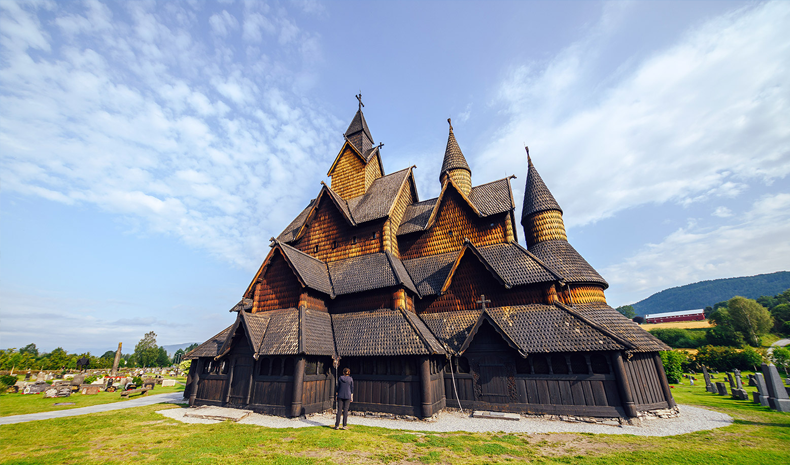
Image source: Life in Norway | Stave Church
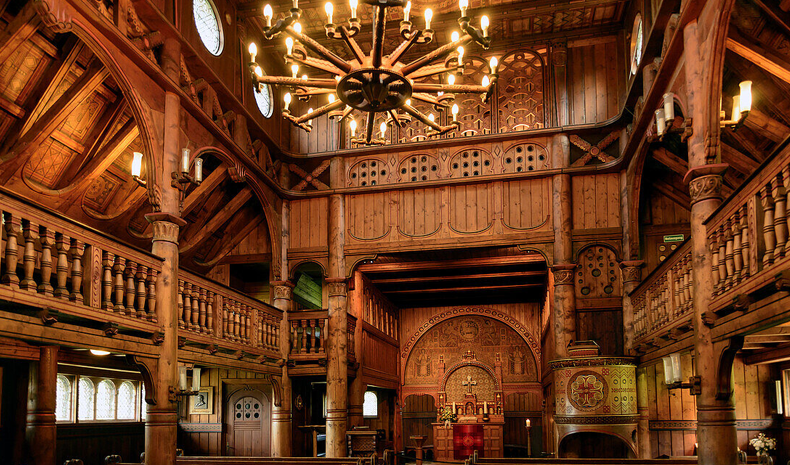
Image source: lookphotos | Stave Church Interior
The Kilden Performing Arts Centre is covered by a curved wooden wall, and Finansparken in Stavanger (one of the largest wooden buildings in Europe), has an eye-catching organically shaped wooden interior.
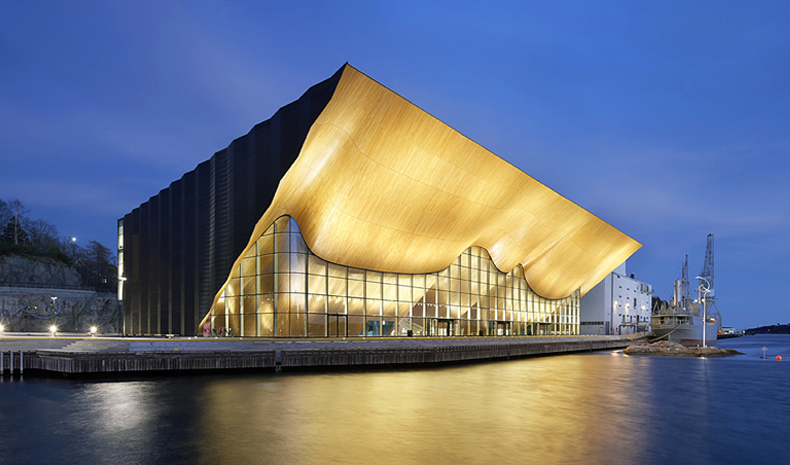
Image source: Dezeen | Kilden Performing Arts Centre
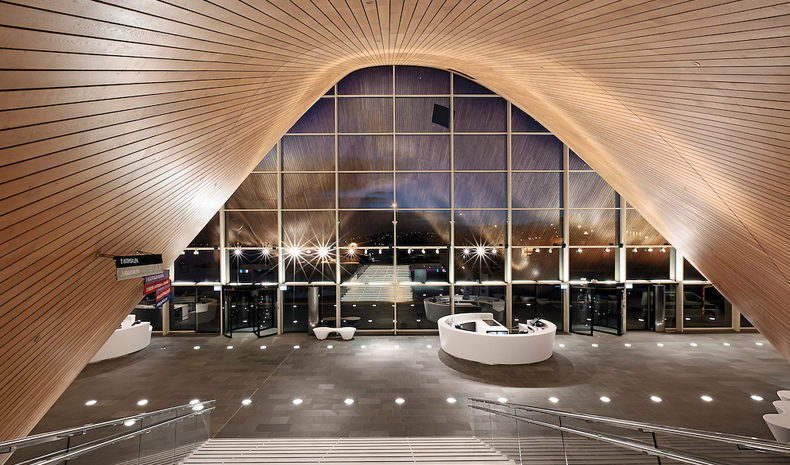
Image source: Tuomas Uusheimo Photography | Kilden Performing Arts Centre Interior
In Harmony with Nature
Over in Sweden, architecture is not only inspired by natural elements but is often intertwined with them. The Artipelag museum near Stockholm was built to portray harmony with the natural surroundings. The museum sits on a specifically selected site within a pine forest with a view over the bay.
Architect Johan Nyrén approached the project with the idea of incorporating all four elements: fire, earth, air, and water. This vision was realized by including fireplaces, natural rock features, and high ceilings with sprawling windows providing views of the nearby bay. The property encourages guests to interact with nature through its many nature trails and a plant-covered roof.
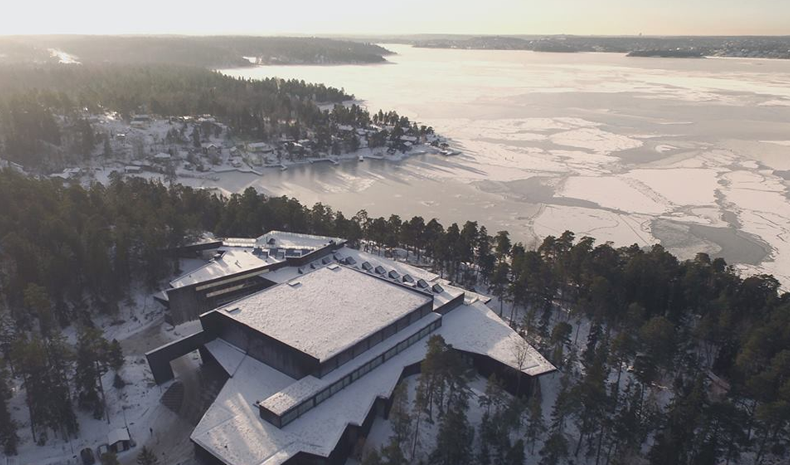
Image source: Culture Trip | Artipelag Museum
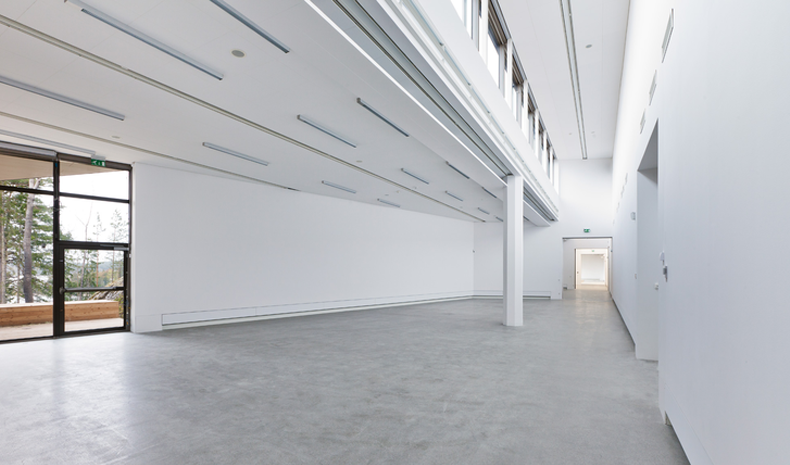
Image source: ArchDaily | Artipelag Museum Interior
Aula Medica in Solna is another example. The building is covered in thousands of unique insulated windows, flooding its interior with natural light. There are also buildings with subtler natural influences, like Medborgarhuset, a civic hall in Stockholm.
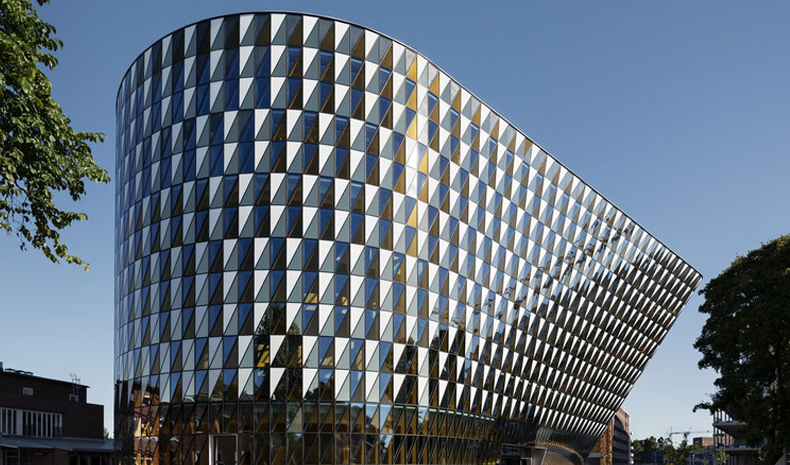
Image source: ArchDaily | Aula Medica
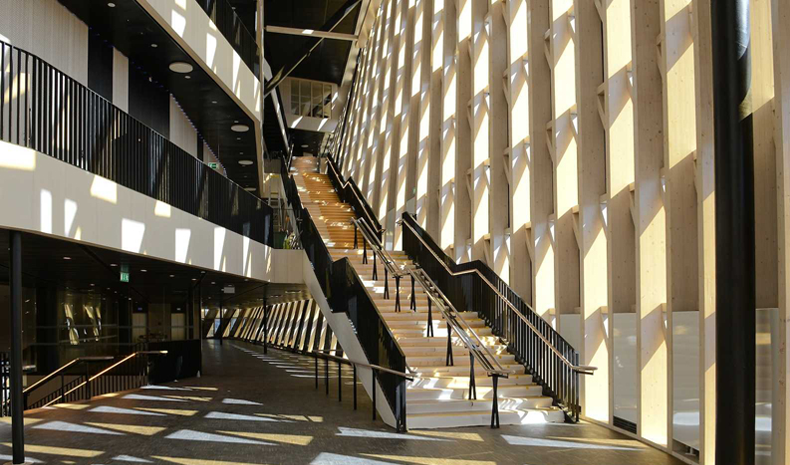
Image source: AllArchitectureDesigns | Aula Medica Interior
Appearing to have a more neoclassical design, the interior of this yellow brick building is where harmony with nature really shines. Organic materials and shapes are found throughout the building, with beautifully detailed handrails, doors, staircases, and a light-filled atrium.
History Plays a Part
Finland is a country with a rich history and culture, and this is reflected in its architecture. Like many arctic and nordic regions, Finnish architecture is marked by its use of color. However, where some of its neighbors favor minimalism and modern architecture, Finland is sprinkled with stronger historical influences, largely due to neighboring Russia.
The Helsinki Cathedral, for example, was constructed from 1830–1852 as a tribute to the Grand Duke of Finland, Tsar Nicholas I of Russia. The cathedral is one of the most recognizable landmarks in Finland and is built from white marble with richly painted green domes.
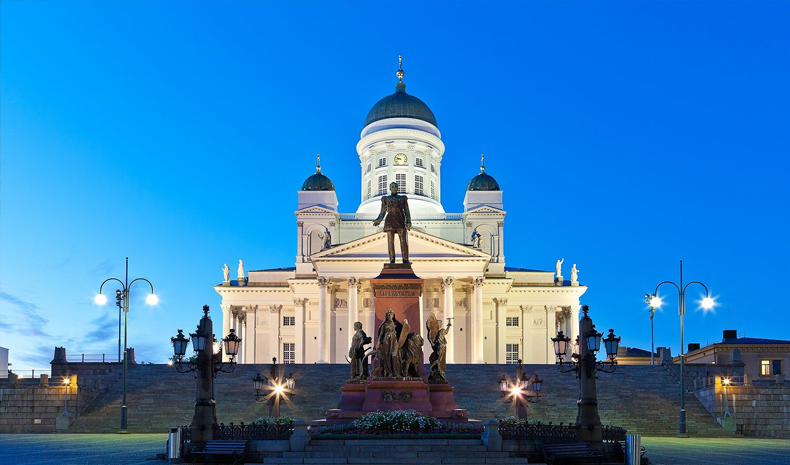
Image source: Trip.com | Helsinki Cathedral
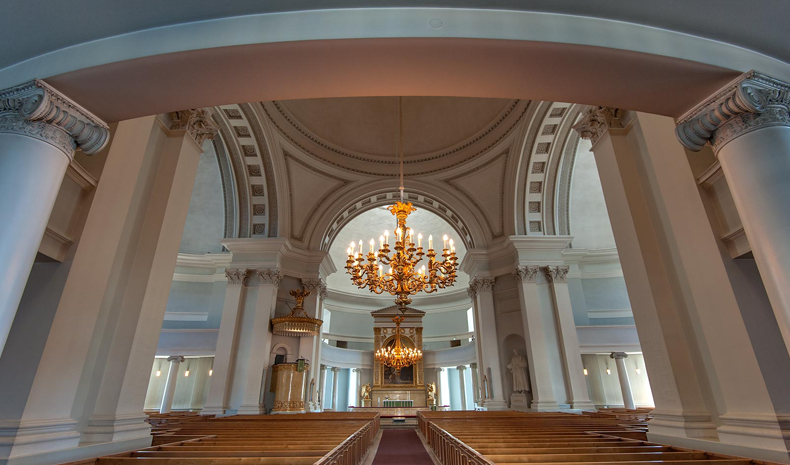
Image source: asergeev | Helsinki Cathedral Interior
Another religious landmark, Uspenski Cathedral is the largest Orthodox church in western Europe, is visited by half a million visitors annually, and is a strong landmark of Helsinki’s Russian period. The building itself is constructed of heavy red brick that was "recycled" from the fortress of Bomarsund in Åland (destroyed during the Crimean war), vibrant green copper roofs, and thirteen 22-carat gold cupolas.
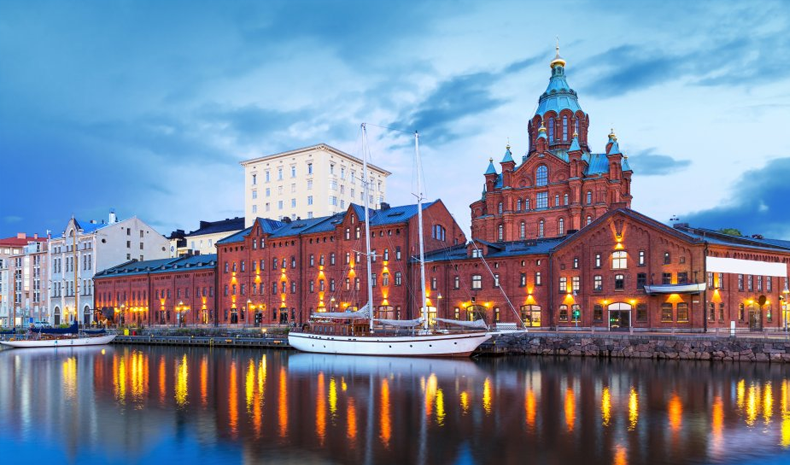
Image source: Trip.com | Uspenski Cathedral
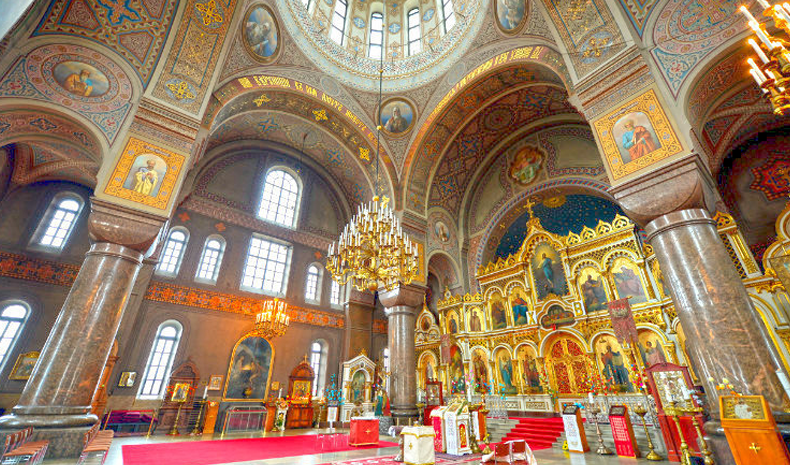
Image source: Bautrip | Uspenski Cathedral Interior
One of the most striking features of Nordic architecture is its use of color and natural materials. Colorful buildings are commonplace with everything from brightly-colored wooden homes to vibrant historical buildings. Even in countries more often associated with minimalism, there is a growing trend for using color in subtle ways in new architecture.
Through all of this, the landscape, local materials, and history of the region continue to play a role. Whether it's a dramatic roof or a simple splash of yellow, color is being incessantly woven with nature-inspired architecture in arctic cities.
 Swatchbox is a premier sample fulfillment service that connects design professionals with building product manufacturers. With proprietary software designed by insiders of the design community, Swatchbox helps manufacturers improve product sales and brand affinity by delivering material samples to the design community with speed, intelligence, and style. Learn more and join Swatchbox at www.swatchbox.com.
Swatchbox is a premier sample fulfillment service that connects design professionals with building product manufacturers. With proprietary software designed by insiders of the design community, Swatchbox helps manufacturers improve product sales and brand affinity by delivering material samples to the design community with speed, intelligence, and style. Learn more and join Swatchbox at www.swatchbox.com.



